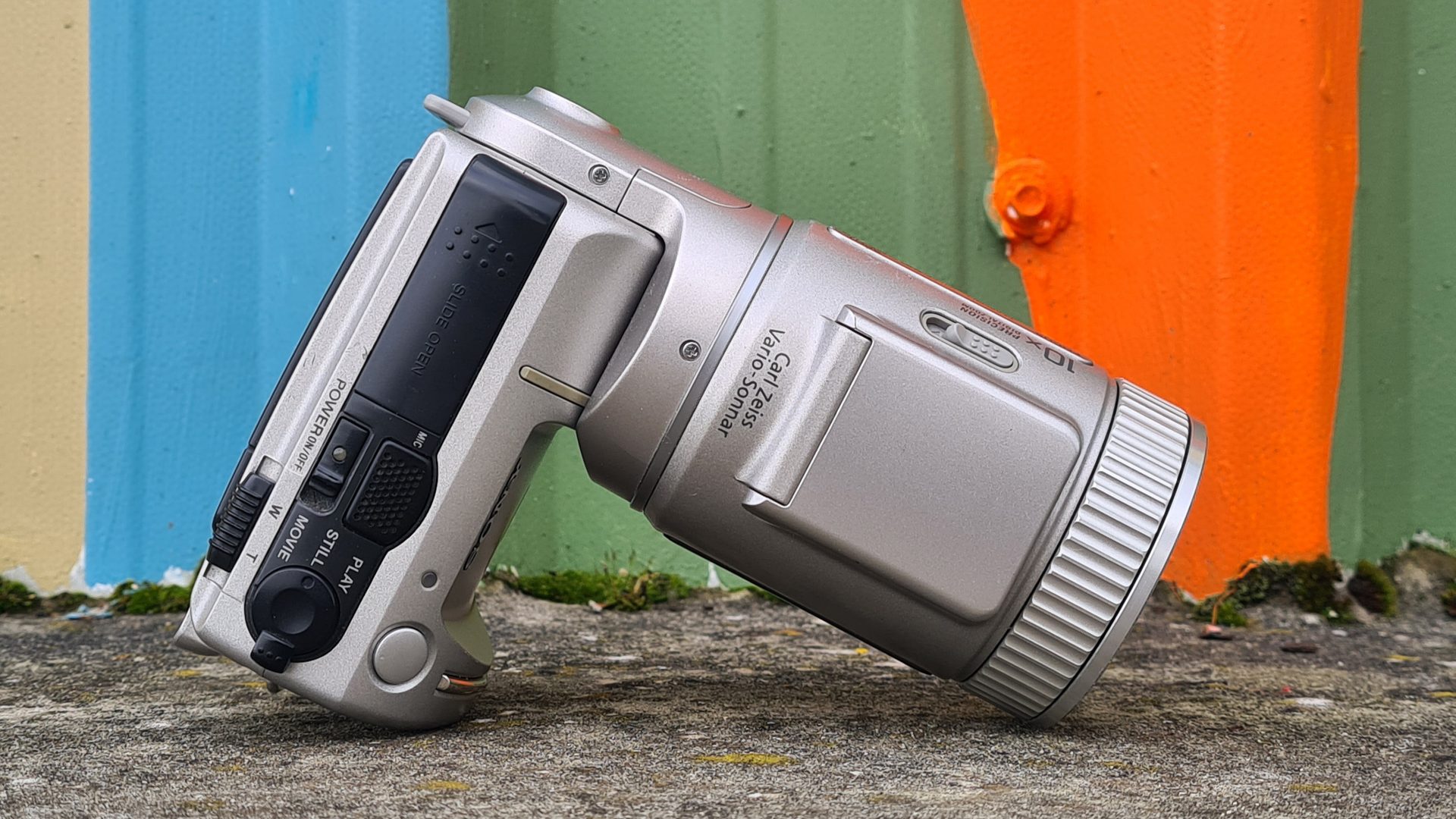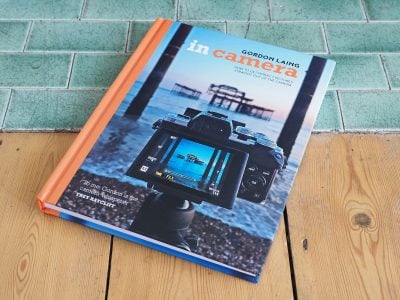Sony Cyber-shot DSC F505 retro review
-
-
Written by Gordon Laing
Welcome back to another episode of vintage digicam tales and today it’s the turn of the Sony Cyber-shot DSC-F505, not only one of the most iconic cameras of its day, but arguably Sony’s best consumer digital camera to date.
In this video I’ll show you what made the F505 so special back then and also try it out on the streets of Brighton over 23 years after it was originally launched. It was one of my favourite cameras when I originally reviewed it, but does it still hold the same charm today? Let’s find out! (If you prefer to read the written highlights, keep scrolling!)
Announced in mid-1999 at a price of around $1100 or £900, the F505 packed 2.1 Megapixels and an impressive 5x optical zoom into a unique L-shaped body. I bought an untested model for just £15 from eBay which, like many vintage cameras, sprung back to life given a new battery.
In use, you rest the large barrel in your left hand and twist the compact grip portion with your right, angling the screen for easier composition.
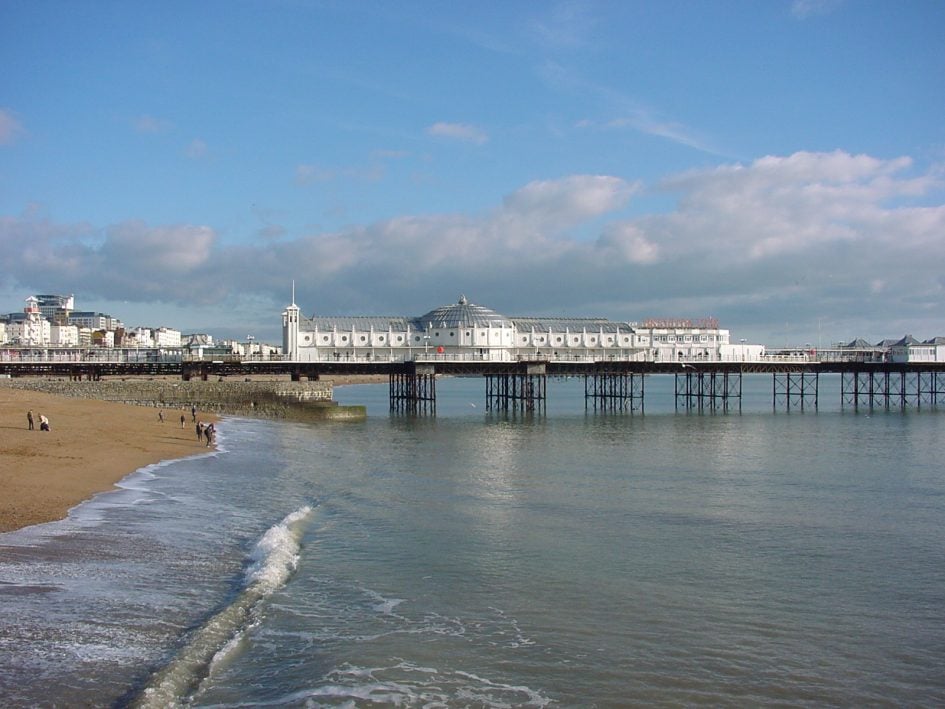
While twisting bodies were commonplace in the early days of digital camera history, Sony’s design for the F505 was pretty unique and a departure from previous models in the F series.
Sony’s first consumer digital stills camera, the F1, launched in 1996, sporting one third of a Megapixel, 4MB of built-in memory and a lens housing which could rotate by 180 degrees. It really embraced the idea that digital cameras didn’t need to look like traditional film models, and still looks modern a quarter of a century later.
The F1 spawned a handful of successors, including the F55 which arrived in early 99 and became the first Cyber-shot DSC with a dedicated slot for Sony’s Memory Sticks as well as a Carl-Zeiss branded lens. While the F55 isn’t particularly well-known today, its headline upgrades were key to Sony’s success going forward. The limited built-in memory and awkward serial interface of earlier models was resolved by employing removable memory cards (albeit using their own new proprietary format), while working with a well-known lens company gave Sony respectability with camera enthusiasts.
The F505 wore both strategies with literal badges of pride, sporting a large Memory Stick logo on the main body and Carl Zeiss branding on the top and front of the lens barrel.

But it’s of course the body shape you notice first, and it’s testament to Sony’s Design Center that the F505 almost immediately reprograms decades of traditional camera muscle memory, with your left hand intuitively supporting the substantial barrel, leaving your right to operate the main controls and twist the body for comfortable viewing.
It remains a genuinely usable design too, with the screen section angling up by 90 degrees for waist-level shooting, or down by about 50 for easier framing at higher angles. The twisting mechanism feels smooth with just the right amount of resistance, and a satisfying notch in the straight-ahead position. In general use I tend to angle the screen up by about 45 degrees.
The design makes the F505 a camera of two halves, with the lens, sensor and a handful of controls in the barrel, leaving the screen, battery, card and main controls in the rear body.
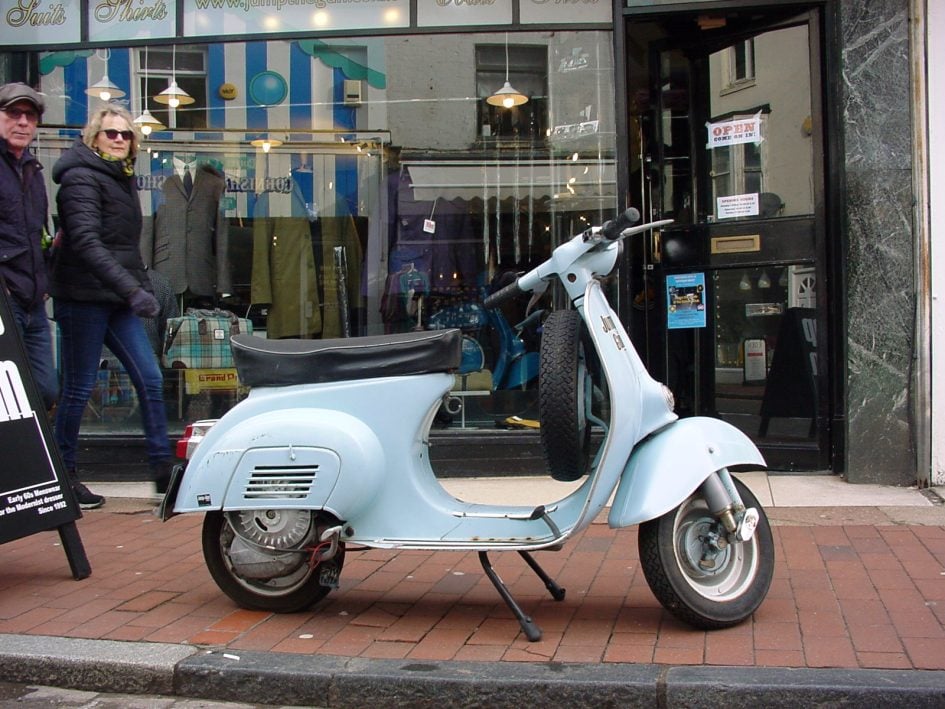
When most digital cameras of the time standardised on 3x optical zooms, Sony opted for a longer 5x range, equivalent to 38-190mm, taking you from here to here.
Then as now I wish the lens started wider, but few if any rivals did, and there’s certainly no denying the beneficial reach at the long-end, allowing you get much closer to distant subjects.
The zoom’s motorised and operated by a slider on the main body which falls naturally below your thumb. Unlike many digital camera zooms which lurch from one focal length to another, the F505 allows fine and smooth adjustments, with the speed proportional to how far you push the slider. There’s definitely two, maybe three speeds available, and impressively you can zoom while filming video.
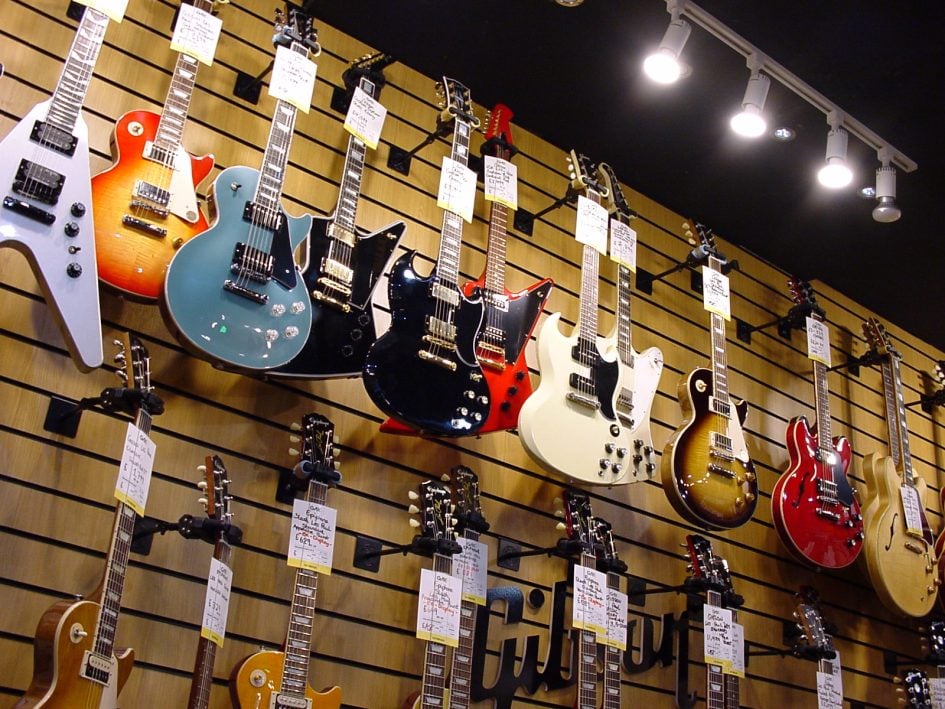
The aperture’s nice and bright too, starting at f2.8 for roughly the first half of the range before only closing a little to f3.4 for the second half.
On the side of the barrel are buttons for the macro mode, white balance options including a custom preset, and spot metering, along with a switch for auto or manual focus, the latter using the outer ring on the lens to adjust the distance.
While we’d have to wait for its successor for any magnified assistance, icons do at least indicate if the subject’s in focus or which direction you need to turn the ring. This is still a step-up from the handful of preset manual focus distances of most rivals.
On the top of the lens barrel is a spring-loaded popup flash, while underneath you’ll find a tripod thread gratifyingly on the optical axis and free-ing up the rear body section.
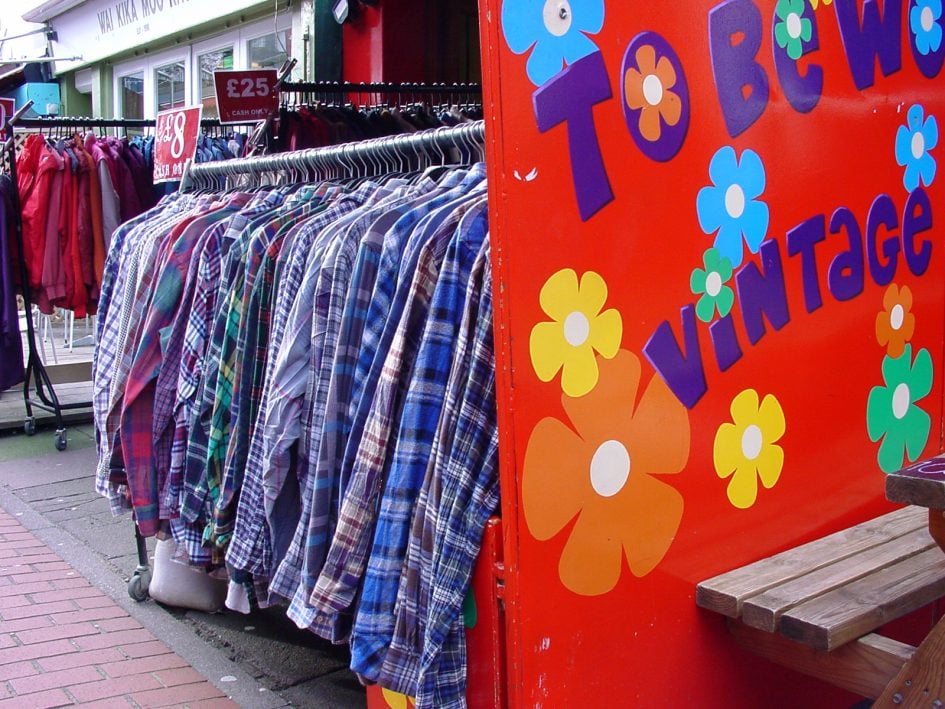
Most of the day-to-day controls are clustered in the upper right side of the rear body: alongside the zoom slider are the power switch, microphone, shutter release and the simple three-position mode dial, letting you choose between Playback, Stills or Movies.
The rear of the camera is dominated by a 2in screen, and in the absence of a viewfinder, is the sole means of composition. Like the F1 before it, Sony’s gone for a transflective Hybrid panel which can either reflect ambient light to save power or switch to a conventional backlight under dimmer conditions.
Like other reflective panels, the usability is hugely dependent on not just the brightness of the light around you, but also the angle of the screen in relation to it and your eyes. Bounce bright sunlight at exactly the right angle and the screen becomes remarkably clear, but at other times it becomes hard to view.

Switching on the backlight won’t help much in bright conditions either and is mostly for use inside. The hybrid concept was a cunning power-saver back in 1999, but improved batteries and backlights meant Sony would switch technologies on later generations.
Alongside the screen, a rocker control navigates the menus and exposure options. Push the Program AE button and you can cycle between Program, Aperture and Shutter Priority, two night modes and two geared for landscapes with or without a person in the frame.
Clicking the Effect menu cycles between negative, sepia, black and white or solarized, while the File menu lets you adjust the image quality including two JPEG compressions and three resolutions, albeit no uncompressed option yet.
Meanwhile the Camera menu lets you adjust exposure compensation, flash level and whether to allow the digital zoom which doubles the effective reach albeit with a loss of quality.
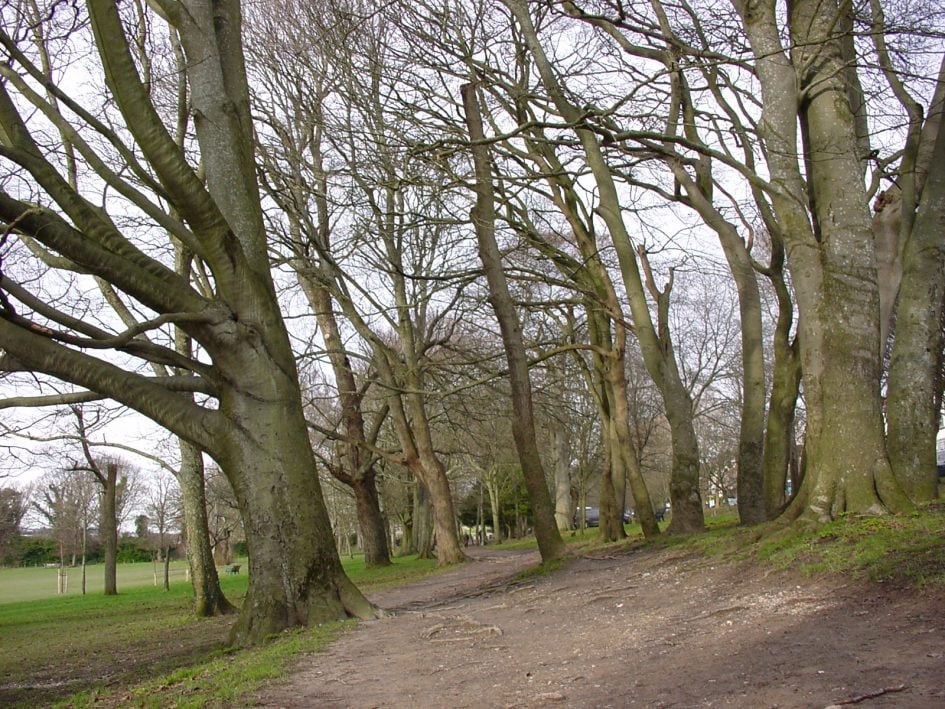
Like other cameras of the time, the F505 employed a 2.1 Megapixel, half-inch type CCD sensor, capturing a maximum resolution of 1600×1200 pixels with a typical file size of 500kb using the best quality option.
Set the mode dial to Movie and you can record video at either 320×240 or 160×112 pixels, both at a jerky 15fps, and for a fixed time of either five, ten or 15 seconds per clip, or up to a minute in the lower res mode if you keep the shutter button pressed.
Videos are recorded with sound and as you can see from this clip, it’s also possible to optically zoom while filming, and the motors are essentially silent too. A feature that few rivals could manage at the time.

Behind a large door on the right side you’ll find the battery and memory card compartment with the F505 adopting Sony’s new Memory Stick format. These were more robust than Smart Media and simpler than Compact Flash, but introduced yet another format into the mix, and Sony didn’t win any friends by bundling the 505 with a meager 4MB card, good for around eight photos using the best quality settings. Thanks for that.
For power, the F505 uses an NP-FS11 InfoLithium pack which cunningly reports how many minutes of life are remaining, but you’ll need to charge it externally using the supplied AC unit, although this also doubles as a mains adapter for powering the camera if desired.
And finally in terms of connectivity, the F505 has an AV jack in the lower right corner, outputting composite video and mono sound to a TV, while behind a sliding flap on the top are USB and RS232 serial I/O ports.
The USB plug is annoyingly proprietary, but the supplied cable will at least allow Macs or PCs to present the Memory Stick’s contents as a drive to drag files out of. In the absence of a cable, just use a USB memory stick reader, or a later Sony camera with a more standard port to read it for you.

Sony Cyber-shot F505 verdict
I’m not ashamed to admit I loved the F505 when I originally reviewed it back in 1999, and my feelings haven’t changed today. Like many in the F series before and after, it represented Sony’s design and engineering teams at the top of their game, not afraid to experiment but delivering products that were surprisingly intuitive to use.
I couldn’t afford the F505 back in the day, but again hunted-down a second-hand untested model on eBay for just £15. It didn’t come with a charger and I later discovered the original battery wouldn’t accept any charge anyway. Not surprising for old Lithium Ion packs.
Luckily replacements are available for around $15 or pounds, with AC chargers costing roughly the same. Alternatively you could track down another camera which shares the same accessories. I found a Sony P1 for sale which came with a mains charger and uses the same battery as the 505, and better still thanks to its more standard USB port, I can also use it as a Memory Stick card reader.
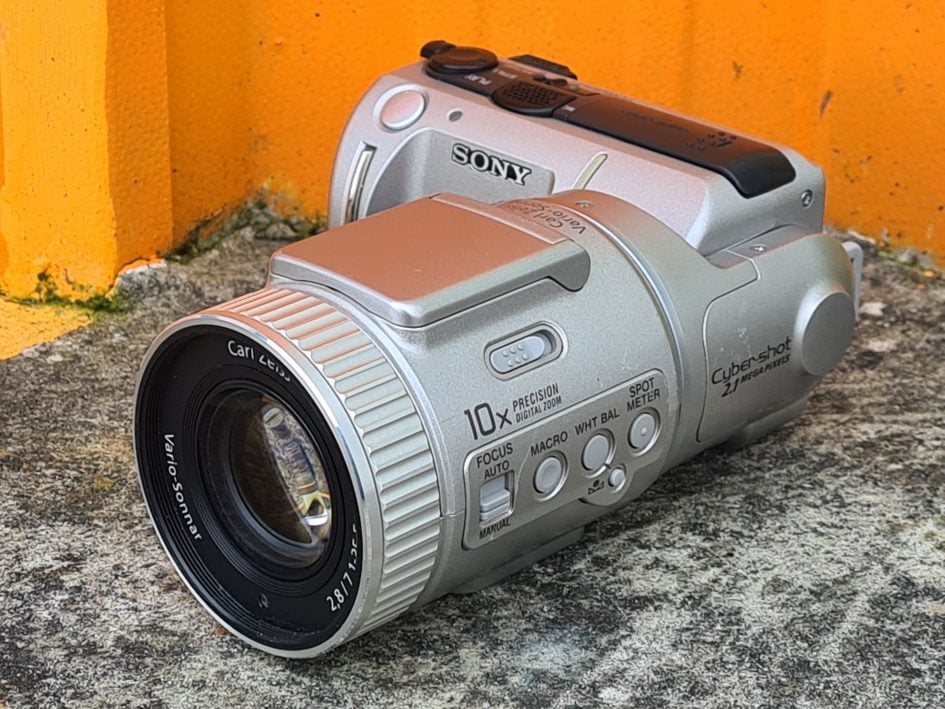
As for the F-series, Sony released the mildly-updated F505v roughly six months later in 2000, sharing essentially the same body and lens, adding an external flash port, uncompressed photo and MPEG HQ video options, and boosting the sensor resolution.
This was however a controversial upgrade as while the 505v housed one of Sony’s new 3.3 Megapixel sensors, it could actually only use 2.6 of them due to the lens which was originally optimised for a physically smaller sensor.
That said, it did allow Sony to extend the life of the otherwise excellent optics and body in a market that quickly standardised on 3.3 Megapixels on premium models. But how much better was the V from the original?
To find out I shot the same scene with both cameras moments apart and zoomed-in for a closer look. Here’s the original F505 on the left with its 2.1 Megapixels, and the later F505v on the right with its 2.6 Megapixels.
Beyond a different white balance here – remember these cameras are both over 20 years old – I reckon the V on the right really is resolving slightly finer detail if you’re pixel-peeping around the railings, wires and piping. Not enough to justify upgrading from the original, but again enough to keep the 505’s lens and body competitive for another year.
One year after that in 2001, Sony launched the F707, sharing the 5x zoom range but with a 5 Megapixel sensor and chunkier body, followed by the similarly-designed F717 a year after that.
The F828 followed in 2003 and while that marked the end of the triple-digit F-series, the Cyber-shot R1 from 2005 arguably shares some of their design DNA, so I’m counting it as an honourary member.
I adored the F-series and over the past couple of years have managed to track down every single model for my own collection. I’ll be making videos about the others, but in the meantime I’d love to hear what you thought of them, whether you were an original owner, or like me lusted after one before fulfilling that fantasy decades later!
Check prices at Amazon, B&H, Adorama, eBay or Wex. Alternatively get yourself a copy of my In Camera book, an official Cameralabs T-shirt or mug, or treat me to a coffee! Thanks!